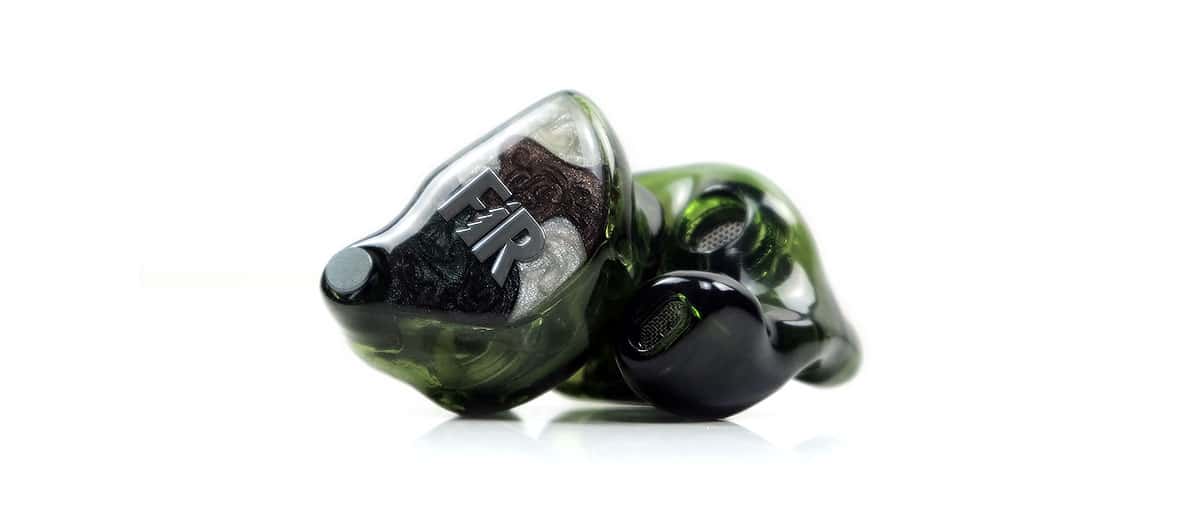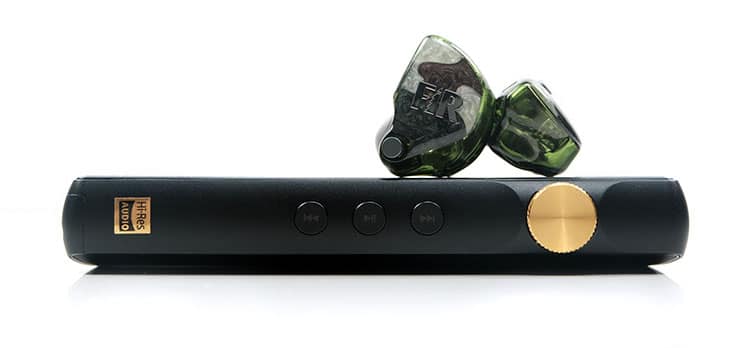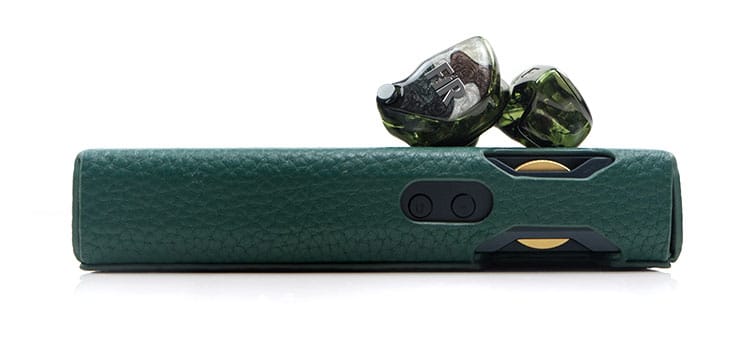Sound Impressions
Summary
The Krypton 5 is a thunderous dense sounding custom monitor with a weak ‘W” to slightly “v-shaped” response curve. It is probably the most dynamic IEM I have reviewed this year with less reference and more ‘musicality’ as they say.
This is a custom design tuned to suit high-energy audio with an addictive high-impact bass presentation, not just on the sub-bass presence but the sheer physicality of the mid-bass punch also.
And boy does it go deep. I can think of nothing save the Empire Ears Legend EVO that comes close to the absolute brutality with which the low-end can hit on the Krypton 5.
I believe the universal version sings a bit brighter based on feedback, but for me, the custom version’s harmonic balance is smooth with an excellent balance and light on any sharp contrast also.
There is a treble extension, some excellent extensions I must say, but there is also a midrange with just a mild bump for vocals and the surrounding areas a little south of the Harman Target Response curve.
This is not a forward-sounding midrange in the fashion of Empire Ear’s Odin. Or, perhaps, as spacious as the JH Audio Sharona. It does go deep and tall though with excellent imaging and instrumental separation, particularly with a balanced pairing such as the HiBy RS8’s 4.4mm output.
It is easy to drive but likes power also, quality power, not just voltage for the sake of it. There is nothing worse than a monitor of this caliber sounding mute and boring.
It is not built to be passe and Barry Manilow lowers are not its target audience. Switch on the P+ on the Cayin N8ii and Turbo Mode on the RS8, give it a lift in dynamics and ‘let loose’ the enjoyment value.
Frequency Response
The precise FR will largely depend on which ATOM filter you are using with the gold upping the sub-to-mid bass by around 2dB down to the lowest isolation filter, the red, dropping it by up to 7dB lower. FiR does cite the silver ATOM as the stock tuning and that is the one you get installed out of the box.
As mentioned at the start the curve is somewhat of a mild-W as in there is a midrange bump around 1-2k that is largely in line with Harman but from 2-4k it runs a little south where the energy drops a bit.
On either side, there is elevation, most notably from 20Hz to 200Hz pushing up both sub-bass and mid-bass with aplomb.
It does dip from 300hz to 800Hz which helps keep the bloom and check and allows the mild vocal bump to have some nice presence and clarity. It’s actually an incredibly tight dynamic driver response, and nothing is smeared.
In fact, with the black and red filter, the bass becomes increasingly refined without losing too much authority. Once you go to the gold filter that is when everything becomes quite dense and elevated on the low end.
The treble from 6-10k meets the curve on the lower side and slightly above once you move into the upper treble around 8-10k. You do get some nice headroom but contrary to most people’s experience with the universal version I find the balance here to be quite excellent and not sharp at all.
It is only when you switch to the red filter and the bass counter-balance is pulled back do you hear the treble pick up in presence and influence. Otherwise, it’s a very smooth performance.
Timbre
The timbre on the Krypton 5 is gorgeous in all honesty but it’s not fixed in stone. That being said, there is a core sound with a superb fundamental for low-end notes rich in texture combined with the clarity and precision of the drier balanced armature through the mids and highs.
The bias is more to the even-harmonic over odd but there is enough treble sparkle with the stock silver ATOM module to give guitar plucks and hi-hat hits a bit of life and believability. Just nothing that is overly spicy or uneven sounding.
Most likely your ear is going to be set on the bass, it colors most everything up to 1-2k both in terms of actual lower register notes and midrange notes that pull from the lower harmonic order giving them a tasty ‘bottom weight’ and firmness to their delivery.
The gold ATOM filter will probably seem the warmest and densest sounding performance. You will get a bit more warmth traveling up into the mids thickening the notes considerably over the least isolating filters, black and red.
The latter filters bring the tone close to neutral for me, allowing the treble to infuse midrange notes with a bit more brilliance and less overall weight. The black filter in particular has the best bass/treble balance though if it’s vocal purity you are after the red filter has an edge for my tastes.
Staging & Dynamics
The Krypton 5 excels in depth and power with a pretty good extension. Width is not bad actually but with its mids ever so slightly below the curve, they lack that in-your-face forwardness favored by some competing monitors.
Thus, it can sound a little bit darker through the mids compared to earlier models such as the EST-driver-infused M5 whose 3-5k range has more elevation and presence.
Nevertheless, the vocals are not dipped and lost in the mix and with more forward-sounding sources such as the LP P6 Pro, they can sound quite firm and focused. My personal preference here is the RS8 which opens up the mids a bit more, enhancing the instrumental separation and an improved sense of space.
Filters will tweak that stock profile a bit with the gold version pulling you into an immersive and very powerful-sounding presentation. There is a little less headroom and air through the mids but if you want explosive bass and the strongest fundamental to your music then it is going to be a clear choice.
The black and Red filters will open up the staging, particularly through the mids and highs, and drop the bass presence a little, but not hugely so despite the dB drop. It still has a very punchy quality just not as forward and dense allowing vocals and treble, (red), to shine a bit more.
Synergy
ATOM Filters
The core function of the ATOM filter system is passive noise isolation. However, each module will also tweak or shape the frequency response of the Krypton 5 and offer a slightly different spin on the stock sound.
The Krypton 5 stock sound is with the silver module which has a passive isolation capability of up to -15dB and is the basis for our main sound impressions.
Gold
The filter with the strongest level of isolation is the yellow or gold version with up to -20dB of isolation. It is also the most bass-intense filter with an additional 2dB of amplitude. The tone is more rounded and denser compared to the silver module. It works especially well for heavy-hitting rock and EDM.
Sub-bass presence is enhanced as is the mid-bass impact with the Krypton 5 sounding at its most powerful. Vocals become a little more intimate and thicker compared to the silver module which has a little more airiness and a slightly brighter treble sheen in its timbre.
Black
The next ATOM filter down from the gold and silver ATOM filter in terms of isolation is the black filter rated at -13dB. This is probably one of my favorites of the 4 filters on offer.
It has a certain purity and airiness to it that really helps with instrumental separation and vocal imaging. The bass response is not hugely reduced over the stock sound either which helps in case you are thinking it will end up sounding considerably shallower.
Instead, you get a less ‘walled-in’ experience compared to the gold filter and something I would consider rather more balanced sounding.
Red
The final red ATOM filter will drop the isolation down to -10dB and will sound the most neutral of the 4 modules with a moderate kinetic bass performance relative to the stock silver.
If you want your vocals with a bit more neutrality and clarity then this is the module to use. It is the cleanest sounding of the supplied filters with a tilt slightly to the reference side for timbre and with enhanced treble sparkle.
Efficiency
There is no SPL rating for the Krypton 5, we just have the impedance level which is set at a reasonably low 22Ω. However, I would rate the Krypton 5 as fairly efficient, at least compared to alternative hybrid dynamic drivers and most of the EST driver hybrids we have reviewed previously.
For example, the JH Audio Jolene, a quad dynamic driver hybrid needed at least 10 steps more volume than the Krypton 5 using a low gain balanced output setting on the RS8.
The UM MEST MKII is rated at 12.3Ω with SPL at 112dB. However, with its EST driver setup, it does need more power with the Krypton 5 sounding the more sensitive of the two using a Cayin N8ii on a low-gain balanced output. Also, a similar outcome with FiR Audio’s own M5 which also has an EST driver.
Save for the HiBy R8 balanced output and the high gain setting in turbo mode on the RS8 the background on all our tested sources was very quiet with the Krypton 5. I could not detect any noticeable hiss with the likes of the LP P6 Pro, Cayin’s N8ii, and both of the SE tube outputs of AMP13 with the DX320.
Source Pairings
I tested 4 different sources with the Krypton 5 and took a little something away from each one in terms of what worked and what didn’t.
The one theme throughout was energy. You definitely want a source that will deliver a bit of snap and drive to the Krypton 5 to maximize the response of that dynamic driver.
For example, two sources that have supply voltage enhancement features, the Cayin N8ii and the HiBy RS8, sound a little bit flat and reserved with the Krypton 5 with their respective P+ and Turbo mode turned off.
Once turned on the low-end has a far superior snap with some additional vibrance in the mids. That is important to me since the Krypton 5 midrange is relatively neutral in imaging compared to the aggressive bass presence so you do not want a dull-sounding vocal performance.
Of the two tube performances from the DX320/AMP13, again it is about drive and power with the right SE output presenting a more robust low-end response and a denser midrange/vocal performance with the Krypton 5. I did enjoy the pure tube left output but more for the airier treble sound and better staging properties but the mids felt comparatively unsupported.
The Krypton 5/LP P6 Pro pairing sits somewhere in between the DX320/AMP13 right socket and the RS8 with Turbo mode turned on. Of the four sources, it delivers the densest sub-bass quality and the most forward in terms of imaging.
However, it’s not as expansive or as well separated as the RS8 with a more relaxed treble performance from the Krypton 5. It makes up for that with the best vocal experience of the selected DAPs both in terms of presence and textured detail.



